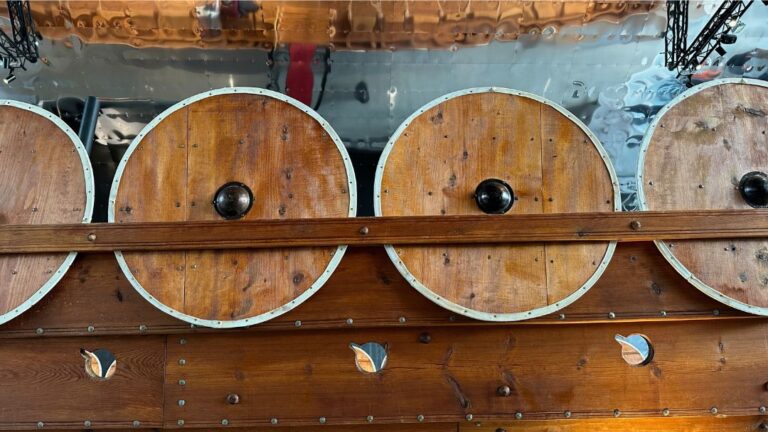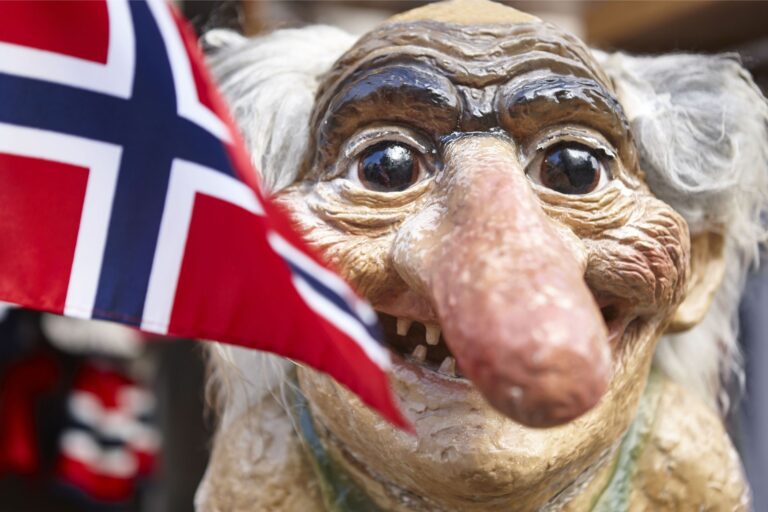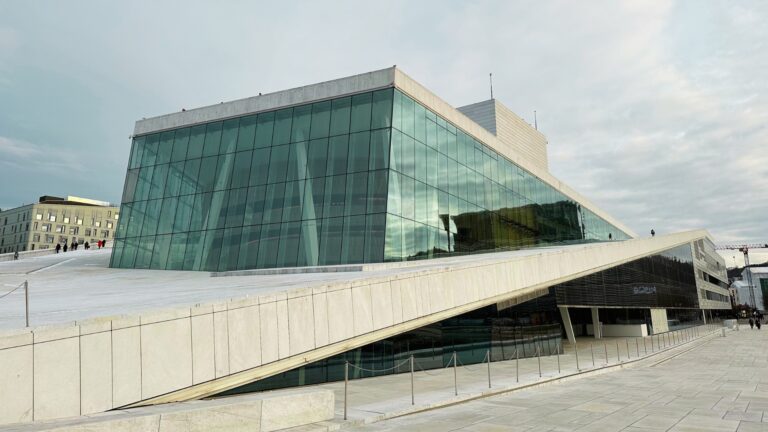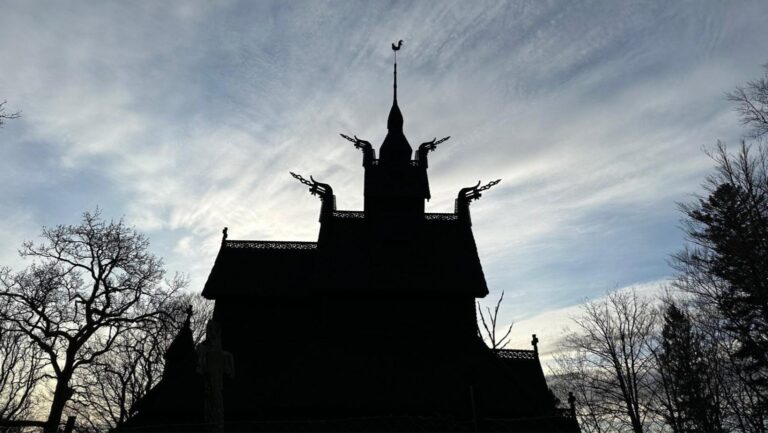From its famous landscapes and natural wonders to its food, history, and mythology, Norway is known for many things around the world. Let's take a look at some of what makes Norway famous.
Tucked away in the northernmost reaches of Europe, Norway is a country of dramatic landscapes, rich cultural heritage, and a way of life that intrigues millions of visitors each year.

When I moved to Norway back in the early 2010s, I didn't know very much at all about the country. I'd only planned to stay for six months, and thought it would be an interesting experience.
Little did I know that I would fall in love with the country, and the country would, eventually, lead me to running this business sharing the stories of Norway with the world.
It's been quite the journey! Over that time–and especially by running this website–I've learned that Norway is known for many different things to many different people.
From its stunning fjords and the often elusive northern lights to its Viking history and modern architecture, Norway is famous worldwide for a myriad of reasons. Let's take a closer look.
Fjord-Glacier Landscapes
With its rugged coastline, imposing mountains, epic fjords, and pristine forests, Norway's natural beauty is hard to beat.

The country is famous for its fjords, which are deep, glacially carved valleys filled with seawater. The Geirangerfjord and Nærøyfjord, both UNESCO World Heritage Sites, are among the most iconic.
At the innermost point of some of Norway's biggest fjords, the water meets the glaciers that created them. Along the way, there's famous waterfalls, historic farmsteads, and small picturesque communities hugging the coastline.
Visitors can cruise through these breathtaking waterways on silent electric sightseeing ferries, hike along their edges, or simply marvel at their beauty from various viewpoints.
Kayaking along the fjords or taking a RIB boat tour are two good ways to get up close with the nature along the fjords.
Northern Lights
The northern lights, also known as aurora borealis, is another natural wonder that draws huge numbers of people to Norway.

The best time to witness this mesmerising light display is during the fall, winter and early spring, and in the northern regions such as Tromsø, where nights are longer.
I've seen the northern lights now many times but contrary to popular belief, they are not “on” all across Norway, all the time. In Trondheim, the lights can be seen only a few times a year when strong aurora activity coincides with clear skies.
Check out this video I took of one of the best aurora displays in Trondheim for years. This was such an impressive display for Trondheim that it brought even local Norwegians out on to their balconies to watch.
If you are coming to Norway just to catch a glimpse, just make sure to educate yourself first on what to expect. The northern lights don't appear as strong to the human eye as they do to camera film.
Rich Viking Heritage
Norway's history is deeply intertwined with the Vikings, the seafaring warriors and traders who left a lasting impact on European history. The country marks the Viking Age through numerous museums and historical sites.

Oslo's Viking Ship Museum houses some of the world's best-preserved Viking ships, offering a glimpse into the life and adventures of these legendary Norsemen. It's currently closed and being rebuilt to create a brand new Museum of the Viking Age.
Every year, various Viking festivals are held across Norway, where enthusiasts can experience reenactments, traditional crafts, and Viking cuisine, further immersing themselves in this fascinating era.
Troll Mythology
Norway is steeped in folklore, and trolls are an integral part of its mythology. These mythical creatures are said to inhabit the mountains and forests, often depicted as giants with distinctive features.
Trolls are a significant part of Norwegian storytelling, influencing literature, art, and even modern media.

Trollstigen (The Troll's Path) is a famous scenic road named after these mythical beings, offering visitors a chance to explore the rugged landscapes that inspired these tales.
Skiing and Friluftsliv
Norway's love for the outdoors is embodied in the concept of “friluftsliv,” which translates to “open-air living,” or more simply, an “outdoors lifestyle.”
This philosophy promotes spending time in nature for recreation and relaxation. Hiking, kayaking, fishing, camping, trail running, and boating are among the outdoor activities you might come across in Norway, but one trumps them all.
Skiing is a national pastime, with cross-country skiing being particularly popular. The country has produced numerous Olympic champions and offers world-class skiing facilities.
Resorts like Trysil and Hemsedal attract skiers from all over Europe, providing excellent slopes and stunning scenery.
Modern Architecture and Design
Norway is increasingly known for its contemporary architecture and innovative design, blending modernity with traditional elements.

Oslo Opera House, with its striking angular design that allows visitors to walk on its roof, is a prime example.
The use of natural materials such as wood and the design principles of incorporating nature and letting natural light in wherever possible are other notable features of modern Norwegian architecture.
Similarly, the Astrup Fearnley Museum, designed by Renzo Piano, showcases modern art in a stunning waterfront setting. Norwegian design is characterized by simplicity, functionality, and a close connection to nature.
Stave Churches
Norwegian stave churches are iconic medieval wooden structures known for their intricate craftsmanship and unique architectural style.
Dating back as far as the 12th century, the churches that remain feature elaborate carvings and dragonhead decorations, reflecting Norway’s rich Viking heritage and subsequent Christian traditions, providing a snapshot of the transitional years.

Among the most famous is the Borgund Stave Church, renowned for its preservation and beauty.
High Standard of Living
Norway consistently ranks high in global quality of life indices, thanks to its strong economy, robust welfare system, and emphasis on equality and education.
The country’s healthcare system is highly rated, and its citizens enjoy high levels of social support and security.
Norway’s modern cities, such as Oslo, Bergen, and Trondheim, offer a high standard of living, with good public services, cultural amenities, and vibrant urban environments. These cities are known for their clean streets and efficient public transportation.
Salmon
Norwegian salmon is a culinary treasure known worldwide for its quality and taste. The country is one of the largest producers of farmed salmon, exporting it to numerous countries. Around 40% of all seafood exported from Norway is salmon.
Salmon is a staple in Norwegian cuisine, enjoyed in various forms, from smoked and cured to grilled and poached. Fish soup is popular throughout the country and usually features salmon.
Brown Cheese
Brunost, or brown cheese, is a unique Norwegian specialty with a distinctive caramel flavour and brown color.

Made from whey, this ‘cheese' is a beloved part of Norwegian breakfasts, typically served on bread or crispbread, but it can also be eaten at any time of day.
Its tangy caramel taste sets it apart from other cheeses, making it a must-try for anyone visiting Norway.
Oil and Gas
Norway's economy has been significantly boosted by its oil and gas industry. The discovery of North Sea oil fields in the late 1960s transformed the country into one of the world's wealthiest nations.
The revenues from this industry are managed through the Government Pension Fund Global, ensuring long-term economic stability and funding for public services.
Sustainable Electric Solutions
Despite the oil and gas money, and in fact, because of it, Norway is a leader in sustainability and environmental technologies.
The country’s commitment to renewable energy is evident in its historic investment in hydroelectric power, which supplies most of the nation’s electricity.
More recently, Norway has pursued an electrification process for the country's transport system, to take advantage of the country's abundant green electricity production.
For example, a long-term strategy of subsidising electric vehicle purchases and usage, and investing in national infrastructure, has resulted in Norway being a world-leader in electric vehicle adoption.
What else is Norway famous for? Let us know what you think of when you hear the word ‘Norway' down in the comments.



Having just spent a month in Norway I suggest that it is known for outdoor sports clothing especially rain wear and companies such as Helle Hanson.
It is also known for Norwegian woollen jumpers (sweaters).
Also King crab and cod and finally, of being very expensive.
I was born in Norway but was moved under protest to the US by my parents and recently became a dual citizen because I love my country so much. But what breaks my heart is finding out the Norway is the #1 killers of whales. Even though Norway is a rich country and money is not an issue, whalers continue to have enough politicians under their thumbs to keep this terrible stain on Norway from being eliminated. I am happy that the Paul Watson Foundation has now been founded in Norway and look forward to helping them in any way I can to stop the whalers from killing more whales and ending this horrific business altogether. Norwegians are better than this.